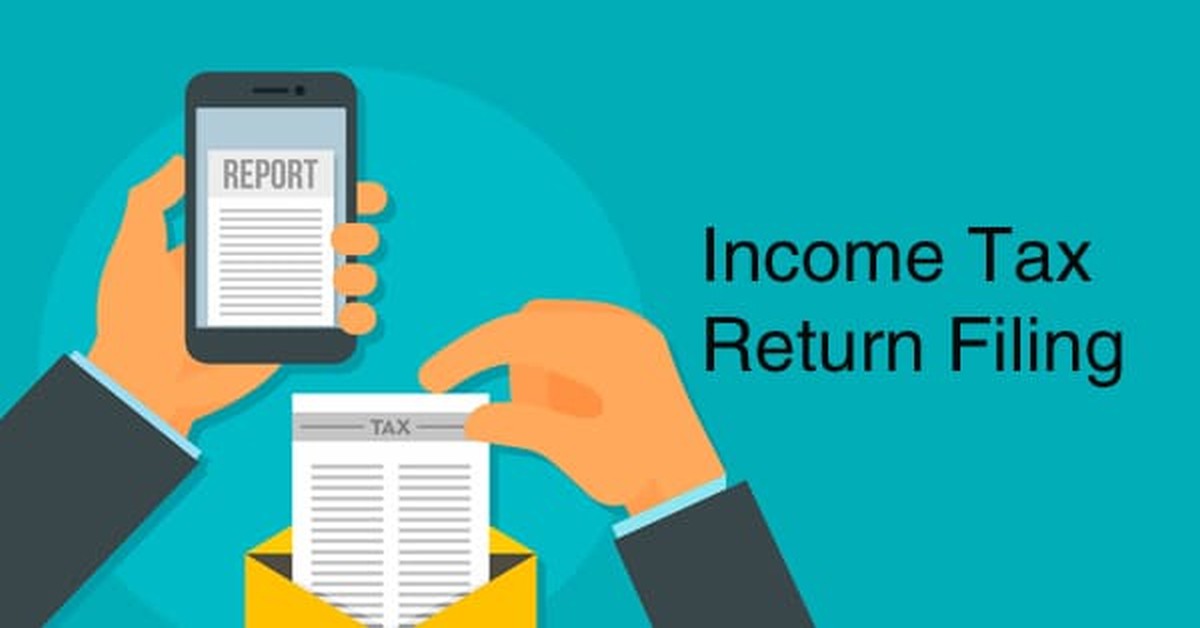An Income Tax Return is a prescribed form in which an assessee declares the income earned and tax paid on such income during a given financial year. The Income Tax Act, 1961 makes it mandatory for certain groups falling within the prescribed tax slabs to file ITR by the end of the financial year. The last date for filing ITR for AY 2020-21 in non-audit cases is December 31, 2020, and for audit, cases is January 31, 2021.
a) ITR Verification
The Income Tax Department provides for both offline and e-filing in which return of income is furnished electronically. However, e-filing tax returns is not the last step, it needs to be evaluated and processed by the concerned authorities. To ensure further processing of the ITR, the taxpayer needs to e-verify their return within 120 days of its filing; else the return will become invalid. This can be done online or by manually sending the signed ITR-V (Acknowledgement) to the tax department’s Central Processing Centre (CPC).

b) ITR Processing and Intimation
Assessment
Once the ITR is filed and the CPC receives the verification, it sends an email acknowledging the receipt of the same. After this, the ITR is processed and evaluated by the tax department to confirm its correctness. This process of reviewing the return is called “Assessment”. Under the income tax law, the major types of assessments are-
1. Summary Assessment- It is the preliminary checking of the income return and doesn’t involve detailed scrutiny. In this step, the total income or loss is computed after adjusting for arithmetical error, visibly incorrect claim, internal inconsistencies, tax calculation, etc. It is to be noted that the adjustments are not made until an Intimation under Section 143(1) is given to the assessee of such adjustments, and a response is received from their end. However, if the assessee doesn’t respond within 30 days of such intimation, the adjustments are made. Summary Assessment can be made within a period of one year from the end of the financial year in which the return of income is filed.
The following kinds of intimations are possible under sec 143(1)-
• Intimation with no demand, no refund- It is the situation where the department accepts the information provided by the taxpayer as correct. In this case, no sum is payable or refundable by/to the taxpayer, or no adjustment is made to the returned income.
• Intimation determining refund- It is the case where interest or tax is found to be refundable. This may be either when the return filed by the assessee is found to be accurate or after making adjustments as referred to in Section 143 (1). Generally, the credit of refund process takes about 20-45 days from the date of e-verification of the ITR.
• Intimation determining demand- This is issued if a discrepancy is found in the taxes paid or the credit claimed or if there is an omission of a particular income in the ITR. The demand has to be paid by the taxpayer within a stipulated time mentioned in the intimation under section 143(1).
2. Regular Assessment- This is a detailed assessment and is also known as a Scrutiny Assessment. In Regular Assessment, it is scrutinized if a taxpayer has underreported their income, overstated their loss, made incorrect claims or deductions, or underpaid tax, etc. In case a return is chosen for regular assessment, the Accessing Officer issues a notice requiring the assessee to attend his office or to produce any evidence in support of the return. After verifying the evidence, the Assessing Officer makes an assessment of the total income or loss of the taxpayer and determines the sum payable by them or refund due to them.
3. Reassessment- If the tax authorities have reasons to believe that some taxable income of any earlier year has escaped assessment, then they may go for a reassessment. Depending on the amount involved, the authorities can opt for reassessment up to five years or more. This can be extended up to 16 years if the income is connected with an asset outside India.
4. Block Assessment- This is conducted in situations where a search and seizure operation needs to be carried out to investigate the taxpayer’s hidden, undisclosed income. The assessment can be initiated up to six years preceding the year in which the search is conducted.
5. Best Judgement Assessment- This is carried according to the best judgment of the Assessing Officer. It is resorted to when either the taxpayer has not filed the income return or has filed a belated return under Section 139(4) or a revised return under Section 139(5), or has not provided the information sought by the tax authorities during the assessment proceedings.
c) Collection and penalty
After the assessment process, the outstanding taxes are collected and refund is deposited. In case after the assessment process, the authorities find any non-compliance with the provisions of the Income Tax Act, they can initiate penalty proceedings against the taxpayer.
d) Grievance Redressal
If the taxpayer is not satisfied with the order passed by the Assessing Officer, they can appeal to the higher authority. The first appellate authority is the Commissioner of Income Tax (Appeals), i.e., CIT(A). Subsequently, the matter can be taken to the Income-tax Appellate Tribunal (ITAT), followed by the jurisdictional High Court and finally the Supreme Court.
Alternatively, instead of going for the appeal mechanism, the taxpayer can make an application of revision to the Commissioner of Income-tax.
Since the tax return process is not complete until the assessment is made or an intimation is received, it is advisable that the taxpayers keep their tax-related documents handy. Some of the important documents that the taxpayers should keep are Form 16, 16A, and 12B, advance tax payment challans, ITR-V acknowledgment, documents related to tax exemption, bank account statements, among others.







 CAclubindia
CAclubindia
